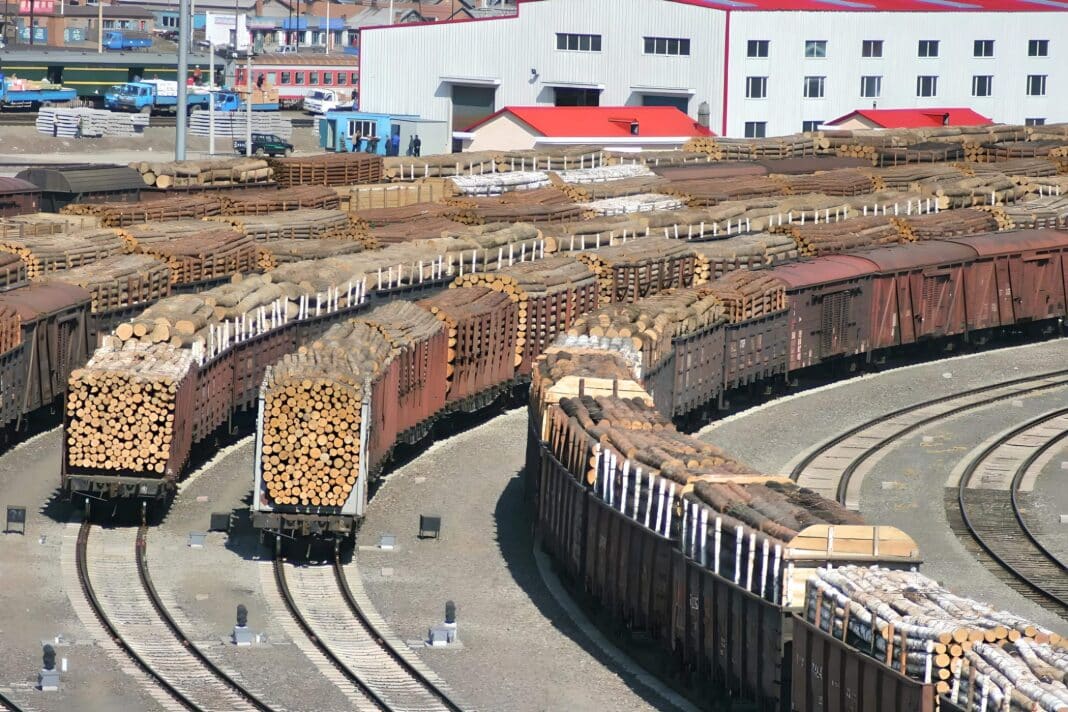Australian builders, architects, and specifiers who for nearly nine months have agonised over an ever-widening supply gap in high-strength engineered wood products have found an unforeseen “saviour” – Russia by way of China, according to sources in the timber industry.
The wood product needed to complete thousands of unfinished “top-half” construction projects around the country seem to have found few structural alternatives.
The material also known as laminated veneer lumber (LVL), originally developed in Australia in the 1970s is used primarily for structural applications and is comparable in strength to solid timber, concrete and steel.
“And heaven forbid, we were penciling in steel on our blueprints as a last resort,” the chief executive of a large Sydney construction company confessed.
Now some of Australia’s biggest processors of domestic timber are re-configuring their machinery as they switch roles to become net importers, filling once-empty warehouses, it’s claimed, with an endless supply of Chinese engineered wood products.
Controversially, sources say this produce is manufactured from Russian logs.
It was not so long ago that both PEFC (Programme for the Endorsement of Forest Certification) and FSC (Forest Stewardship Council) suspended trading certificates in Russia and Belarus, blocking all controlled wood sourcing from the two countries.
Australian timber importers were big users of the Russian product, notably a range of engineered wood products. Collectively, these imports provided between 40 per cent and 50 per cent of the market for LVL, formwork and beams.
There have been few structural alternatives to LVL in any meaningful volume and any plans to set up high-capacity LVL factories in Australia would face, at least, three to five years’ lead time before they were fully operational.
In the past 12 months, Australia has constructed around 140,000 detached dwellings, with this level of demand set to continue for at least 18 months.
Detached dwellings use large quantities of lumber – softwoods for roofs and lightweight framing, hardwoods for joinery and flooring, and LVL for beams. In addition, carpentry represents about 20 per cent of the cost of the average new home.
Russia is the world’s fourth largest softwood producer at 40 million cubic metres. But domestic consumption is only 10 million cubic metres, so Russia was the world’s largest timber exporter at 28.5 million cubic metres before the Russia-Ukraine conflict stopped this industry.
But for the Russians, there are many ways to get around the problem.
For months the UK Timber Importers Federation has warned UK consumers about the risk of Russian birch plywood using China as a “green lane” for importation.
The Timber Trade Federation in August said: “A worrying development has emerged in recent weeks as TDUK members have reported increasing offers of Birch Plywood coming from the far east, particularly China. Given that Birch forests are concentrated in Northern Russia and Eurasia; it is almost certain the Birch contained in the Plywood being offered has in fact originated in Russia.”
And in October 2022 the Washington Post alerted its readers to the threat of Russian birch wood flowing to American customers, disguised as “Asian” products despite US economic sanctions imposed on Russia over its invation of Ukraine.
They have dodged the “conflict” timber ban imposed on them by many countries, including Australia, by railing hundreds of wood wagons every day across the Sino-Russian border into China which has no morality issue with its neighbour.
China is turning these logs into engineered wood products with record shipments to Australia, mainly LVL formwork, which represents 40 per cent of the Australian market, and plywood with the expectation that larger sizes and lengths are not too far away.
How China can kick-start hundreds of LVL plants almost overnight, branding the products certified, remains a wonder. But somehow, they’ve done it.
These comments are reflected in Australian warehouses now bulging with structural timber from China – in fact more than the market can absorb, with heavy discounting likely to be the order of the day.
One Sydney merchant said: “It’s like we’re still dealing with the Russians, but using Russian wood manufactured in China. So really nothing has changed.”
These comments can be evidenced in Australian warehouses now bulging with structural timber from China – in fact more than the market can absorb, with heavy discounting likely to be the order of the day.
All pre-conflict timber from Russia on the sea and paid for was unloaded at Australian ports weeks ago and were quickly swallowed by the hungry trade.
Then the cost of building a new home in Australia rose by 20 per cent due to material shortages, disrupted supply chains and demand for skilled tradespeople. Builders were preparing for even more costly timber products after the federal government imposed a 35 per cent tariff increase on imports from Russia and Belarus.
But China is free from this tariff, shipping Russian wood cloaked as, “manufactured in China” to global markets.
Australia’s biosecurity and border controls have no problem with this provided the products are stamped “certified” and meet grading and building standards.
In fact, a forensic analysis of the manufactured timber for the content, source and its chain of custody – despite the conflict and morality issues – indicates that if it’s from Russia it’s most likely from certified forests.
Until the suspension over conflict timber Russia had both PEFC and FSC ceritifications.
With the Russian Federation’s estimated 800 million hectares of forest, the equivalent of more than 20 per cent of the world’s forest area and more than Canada and Brazil combined, the continued development and growth of sustainable forest management in the country has had considerable environmental, social and economic benefits that give it an edge in competitive so-called green global markets.
But on another slant, specifiers in the Australian commercial space chasing green star ratings won’t have anything on site that’s not PEFC or FSC certified and they can’t guarantee this with the Chinese product. Bunnings, it’s understood, also will have nothing to do with wood that might have the slightest whiff of Russian content.
Meanwhile, the federal government’s Budget pledge of $350 million for affordable housing and other building incentives does not address how and from where the wood will come from.
But for builders and their tradies … well bring it on. If the wood is fit for purpose and seems to have the right ticks and stamps, they don’t give a fig where it came from.
Australian builders, architects and specifiers are happy too.









